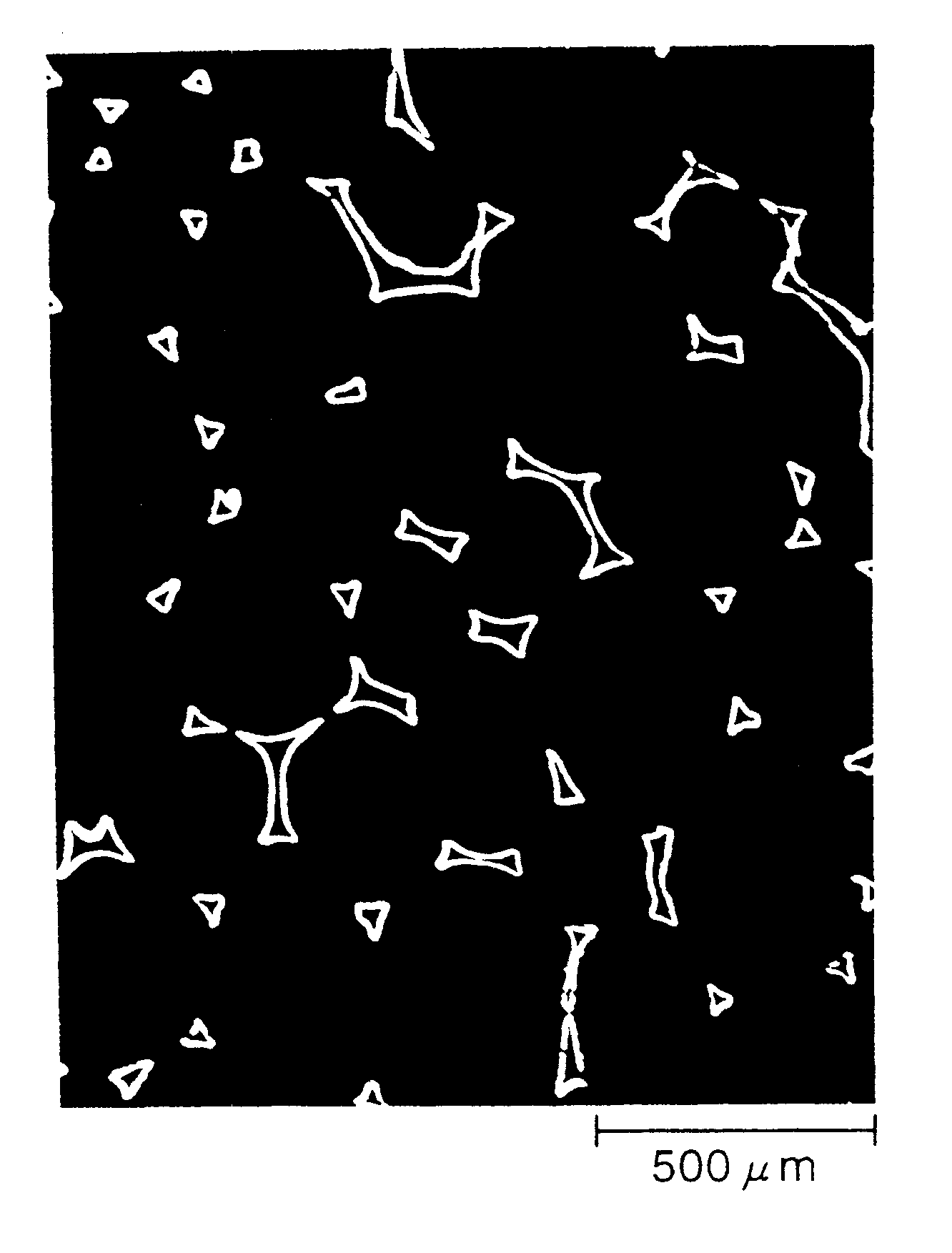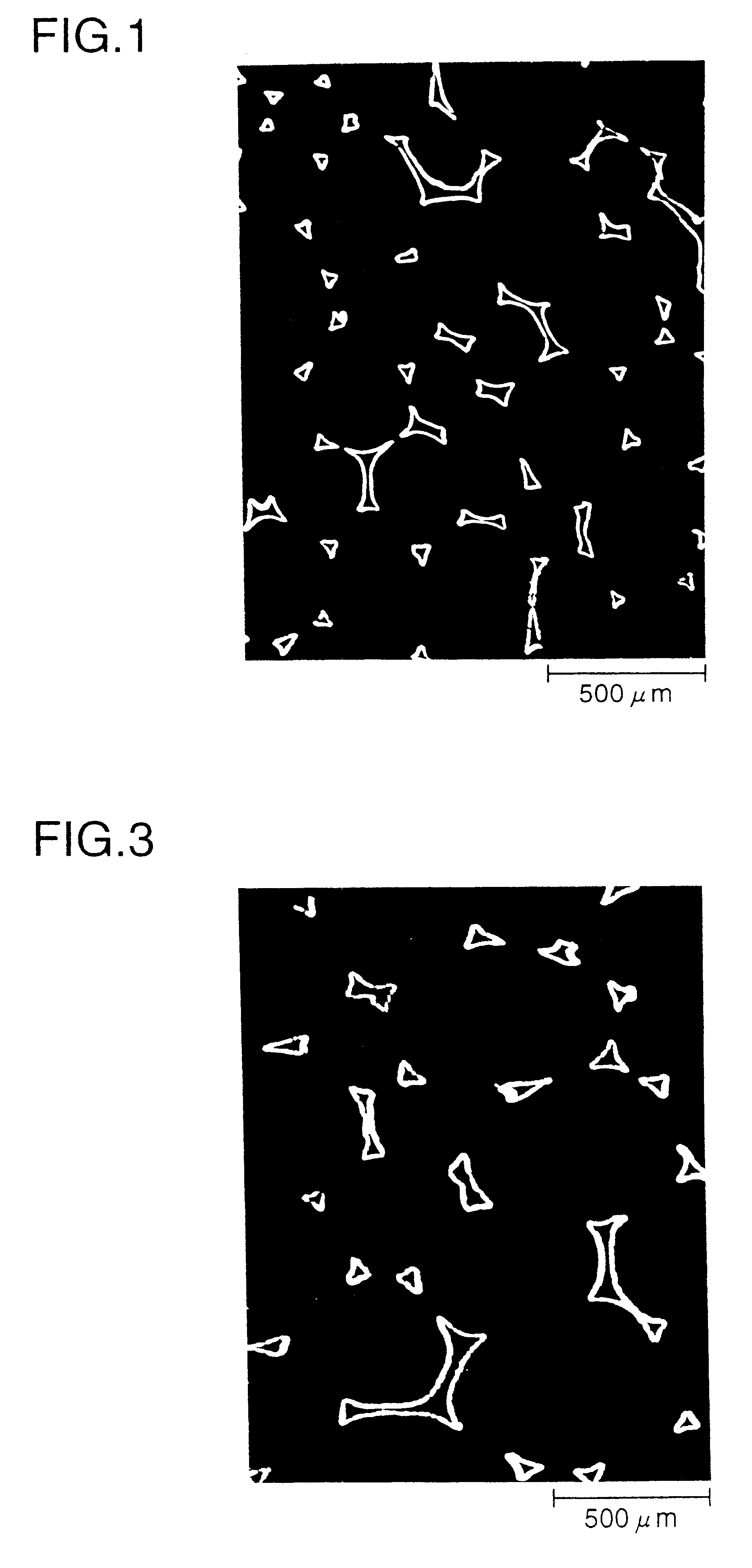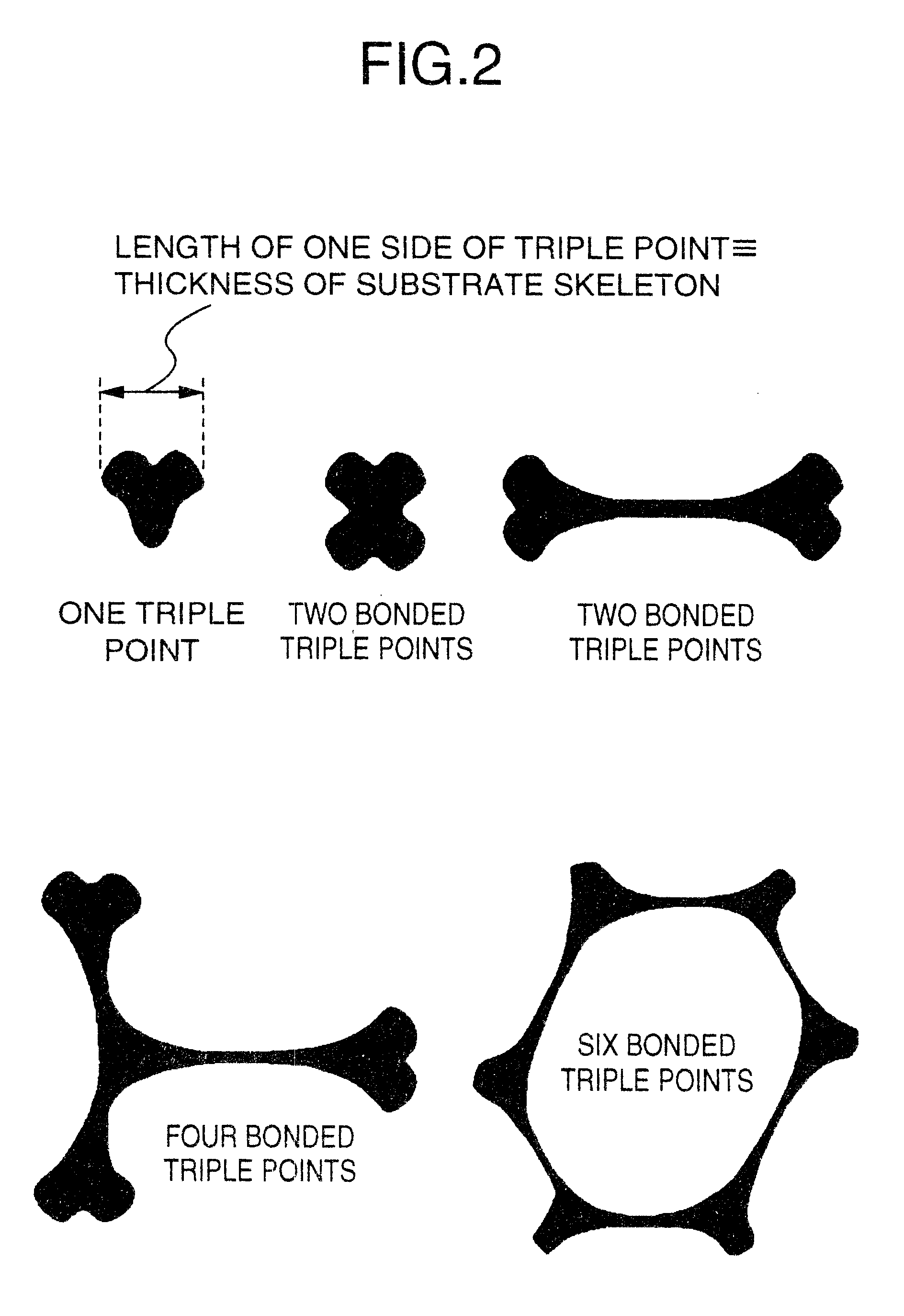Non-sintered positive electrode for alkaline storage battery and alkaline storage battery using the same
a technology of positive electrode and alkaline storage battery, which is applied in the direction of electrochemical generator, cell component, nickel accumulator, etc., can solve the problems of limiting the enhancement of capacity, difficult to increase the porosity of the substrate, and inability to increase the amount of nickel hydroxid
- Summary
- Abstract
- Description
- Claims
- Application Information
AI Technical Summary
Benefits of technology
Problems solved by technology
Method used
Image
Examples
example 1
Production of Positive Electrode
An aqueous cobalt sulfate solution of 1 mol / l was gradually added to an aqueous sodium hydroxide solution, and the mixture was stirred with adjusting so as to keep a pH of 12 of the aqueous solution at 35.degree. C. to precipitate cobalt hydroxide. This was washed with water and then vacuum dried, and the resulting product was employed as a cobalt hydroxide standard sample. It was confirmed by an electron microscope that the sample was in the form of hexagonal plate-like particles of about 0.2 .mu.m in size.
Then, potassium hydroxide reagent (special grade, granules) was pulverized in a dry atmosphere (in a dry box), and this was mixed in a sufficient amount with the cobalt hydroxide standard sample, and the mixed sample was taken out of the dry box and put in a heating container of 110.degree. C., into which air was fed. During this process, the mixed sample was in the state containing a small amount of water in the air due to deliquescence of potassi...
example 2
Production of Positive Electrode
The same spherical nickel hydroxide solid solution particles as used in Example 1 were introduced into an aqueous cobalt sulfate solution and an aqueous sodium hydroxide solution was gradually added thereto, and stirring was continued with adjusting to keep a pH of 12 at 35.degree. C. to precipitate cobalt hydroxide on the surface of the solid solution particles, thereby obtaining Co(OH).sub.2 -coated Ni particles. Here, as for the coating amount of cobalt hydroxide, adjustment was conducted so as to give 5.0% by weight in weight ratio of the coating layer to the total weight of the Co(OH).sub.2 -coated Ni particles. The resulting Co(OH).sub.2 -coated particles were washed with water and then vacuum dried. It was confirmed by an electron microscope that the cobalt hydroxide of the coating layer of about 0.1 .mu.m thick covered the whole surface of the particles.
Subsequently, the Co(OH).sub.2 -coated Ni particles were impregnated with a suitable amount...
PUM
| Property | Measurement | Unit |
|---|---|---|
| particle size | aaaaa | aaaaa |
| particle size | aaaaa | aaaaa |
| thickness | aaaaa | aaaaa |
Abstract
Description
Claims
Application Information
 Login to View More
Login to View More - R&D
- Intellectual Property
- Life Sciences
- Materials
- Tech Scout
- Unparalleled Data Quality
- Higher Quality Content
- 60% Fewer Hallucinations
Browse by: Latest US Patents, China's latest patents, Technical Efficacy Thesaurus, Application Domain, Technology Topic, Popular Technical Reports.
© 2025 PatSnap. All rights reserved.Legal|Privacy policy|Modern Slavery Act Transparency Statement|Sitemap|About US| Contact US: help@patsnap.com



